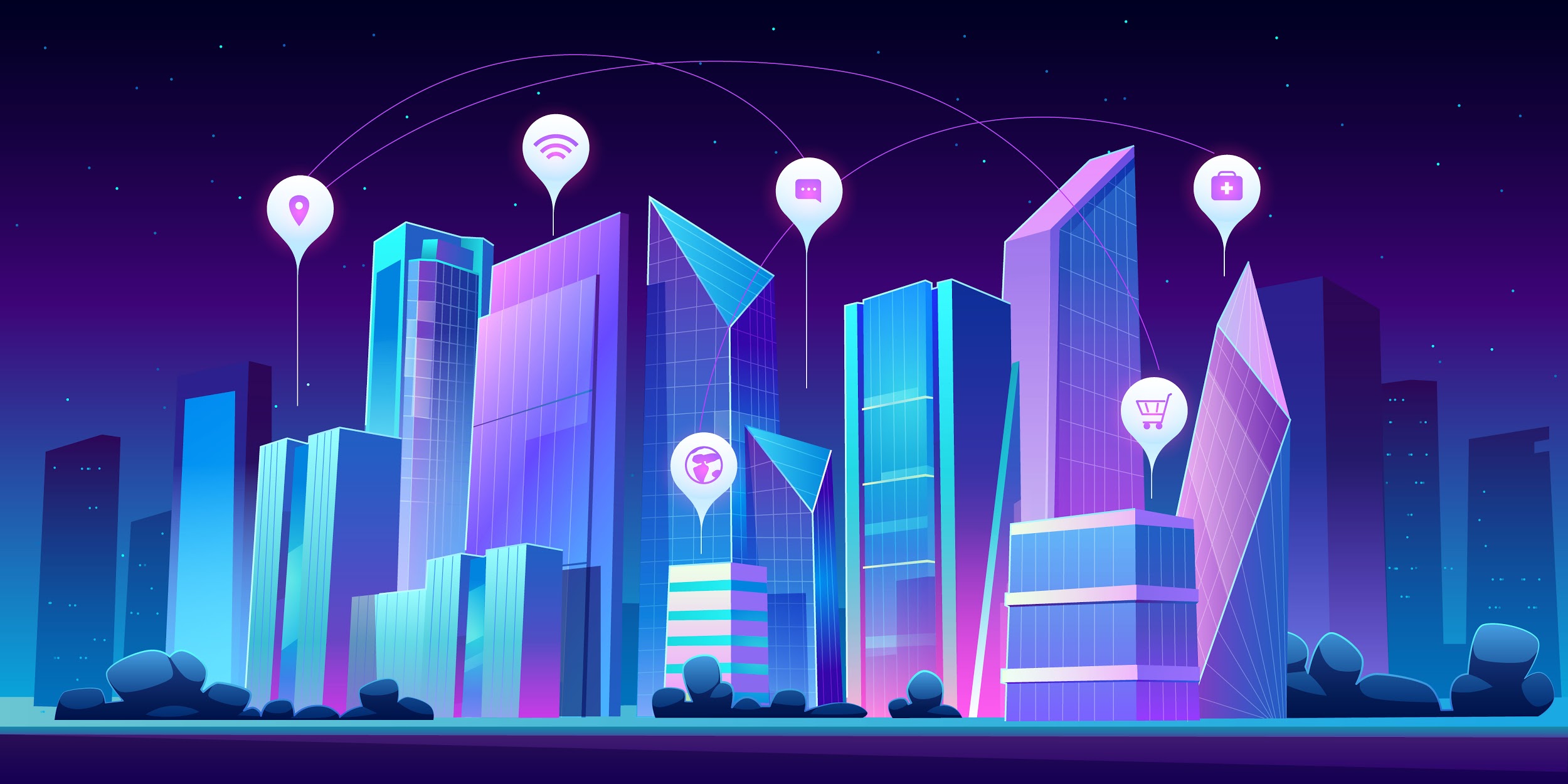Not only are our computers becoming smarter and more connected as a result of the Internet of Things, but buildings are becoming much smarter as well.
Smart building technology encompasses a lot more than just “command and control” devices. Smart buildings use the IoT sensors, apps, and online networking to track a range of building conditions, evaluate data, and create insights into usage patterns and trends that can be utilized to enhance the building’s infrastructure and operations using IoT Device Management. Sensor technology monitors everything from physical space lighting and energy consumption to user-centric functions, including wayfinding and conference room scheduling.

Depending on the aims, smart building technologies can be used in several ways inside a building. Smart building systems will provide actionable insights into the specific field of operation, enabling users to improve.
Here are several global instances of smart building solutions:
1. Capital Tower, Singapore.
The Capital Tower has a range of smart energy-saving devices installed in, including an energy recovery wheel device in its air-conditioning unit that enables cold air to be recovered to keep the chillers working efficiently. Motion detectors are located in the lift lobby, and double-glazed glass windows limit heat penetration and consumption.
The building uses sensors to save water. Sensors track carbon dioxide and carbon monoxide to guarantee that the air quality in the building is optimum.
2. Hindmarsh Shire Council Corporate Centre, Australia
The Architecture of Hindmarsh Shire Council Corporate Centre, Australia, aimed to increase energy quality while also improving staff atmosphere when building the Hindmarsh Shire Council offices. The building is situated in an environment that sees high temperatures, and the architects decided to take advantage of this. They constructed a network of underground thermal chambers and a ventilation device under the floor to get fresh air from the outside. The environment spontaneously cools or warms the climate and is therefore redistributed around the structure.
While rooftop solar panels collect electricity from the sun, LED lighting systems to reduce energy usage and maintenance.
Energy performance is also improved by cross-flow ventilation and zoned motion-detecting lighting, whereas vertical green walls improve indoor air quality.
3. Duke Energy Center, Charlotte, NC
This skyscraper contains Duke Energy and has 48 inhabited floors. It has the highest level of environmental certification, LEED Platinum. The building will reuse about 10 million gallons of harvested water per year, including groundwater, rainwater, and HVAC condensation, covering about 80% of the cooling tower’s water needs and 100% of the building’s irrigation requirements.
There is a landscaped roof garden that eliminates rainwater run-off and absorbs excess heat from the plants. Daylight harvesting blinds adjust to the sun’s position, reflecting light more through the interior and allowing more natural light to enter. The building’s exterior was built to imitate cut crystal and features over 45,000 LED lights that illuminate the structure at night and display a light show at the top of every hour.
4. The Crystal, London
It is one of the most sustainable buildings in the world.
The structure is entirely operated by electricity, with solar roof panels supplying around 20% of the total. It also closely tracks the electricity use, resulting in greenhouse emissions that are about 70% lower than equivalent office buildings in the UK.
A wall of green plants greets visitors on the inside. The building recycles a large portion of its water and heats its hot water with solar energy. Both electrical and mechanical systems in a building, including the heating, cooling, ventilation systems, lighting, and solar thermal hot water system, are regulated by a building energy management system.
5. Burj Khalifa, Dubai
Dubai is at the forefront of the intelligent construction revolution around the globe. Smart building ranking is measured by building sustainability, protection, and productivity.
With a height of 2,716 feet and 160 floors, the Burj Khalifa had already established itself as the world’s tallest structure. Burj Khalifa is one of the smartest and most sustainable structures in the world. The IoT technology has helped the building in terms of air quality, ventilation, and temperature. IoT software receives real-time data from the building automation device and utilizes clever algorithms to detect disturbances and maintenance problems. Facility administrators will use this data to increase building safety and resource performance.
Owners have more insight into the building’s wellness, managers can be more efficient, and operations can be established more effectively in a smart building. The occupants benefit from interactive environments, superior warmth, and more positive interactions. The future’s intelligent buildings would have more illumination and temperature sensors and more personalization for the inhabitants with emerging IoT technologies.







